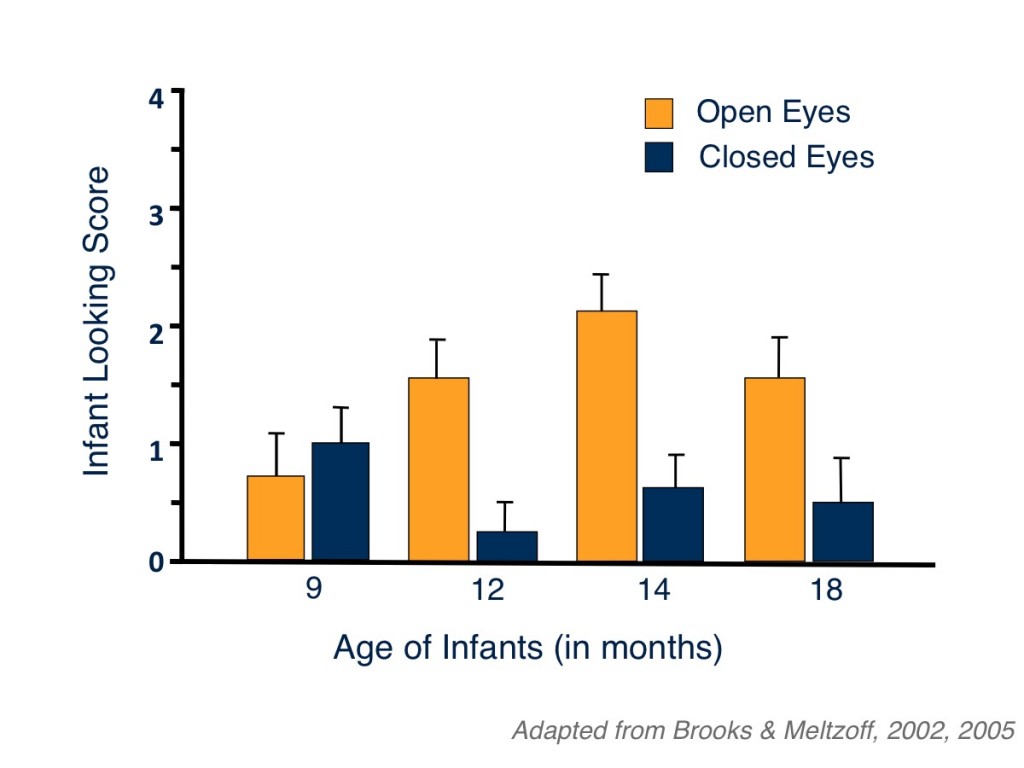
This study found that infants at all these ages understood when another person was looking at an object. So researchers then wondered when children begin to follow the eye gaze of others. They tested 9-, 10-, and 11-month-olds using the same eye-gaze game.
Nine-month-old babies followed the adult’s head turn even when the adult’s eyes were closed. You can see this in the blue bar for the 9-month-olds. The blue bar is just as high or even higher than the yellow bar. These data show that 9-month-olds followed head or body motion. Nine-month-old infants are still learning about the importance of eyes in communication. There is a shift in infants’ understanding of eyes between 10 and 12 months of age. Infants realize that the eyes provide the crucial clue about where someone is looking. This places them on a path toward understanding the thoughts and intentions of others.
-
- Autism Spectrum Disorder (ASD)
- a developmental disorder that impairs a child’s social and communication skills
- Directing attention
- using eye gaze or a gesture to direct another person’s attention to an object or event
- Following attention
- following another person’s eye gaze or gesture
- Gaze following
- looking at what another person is looking at
- Joint attention
- shared attention between social partners to an object or event